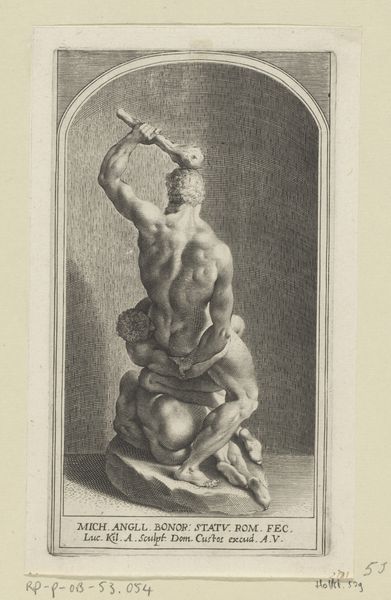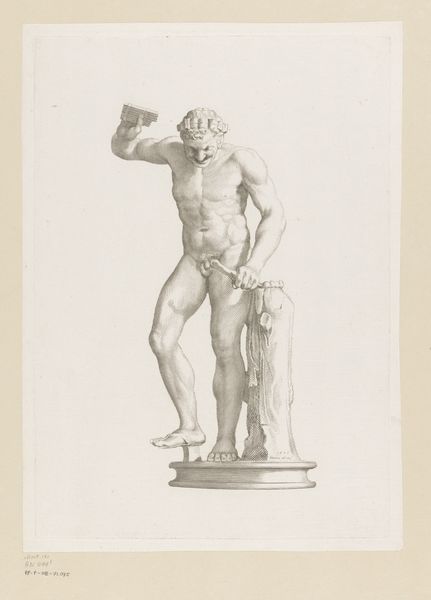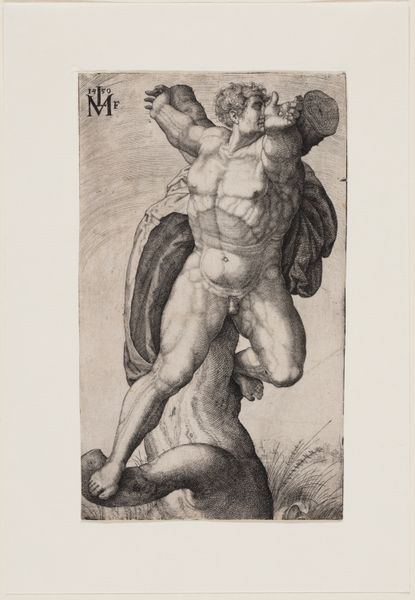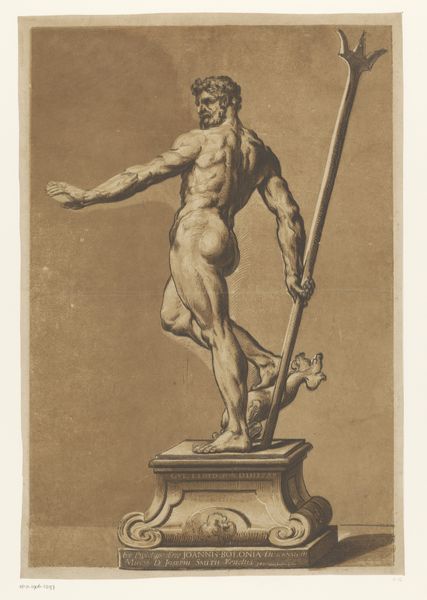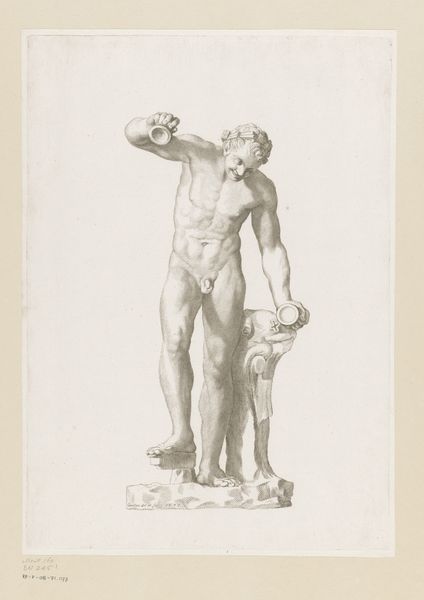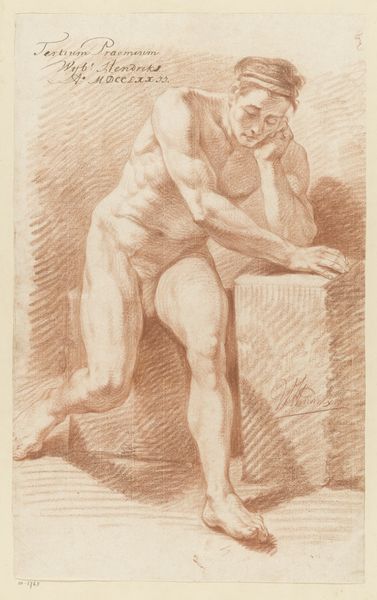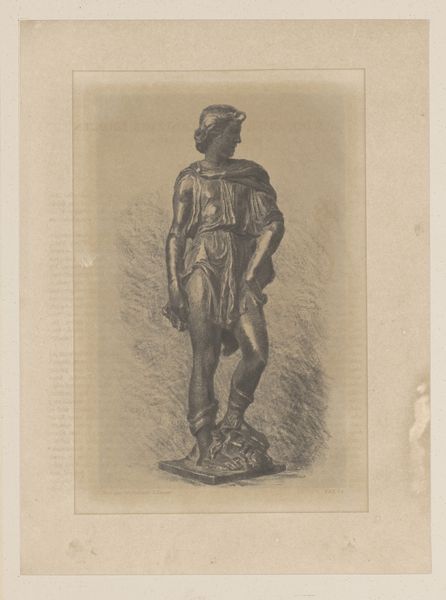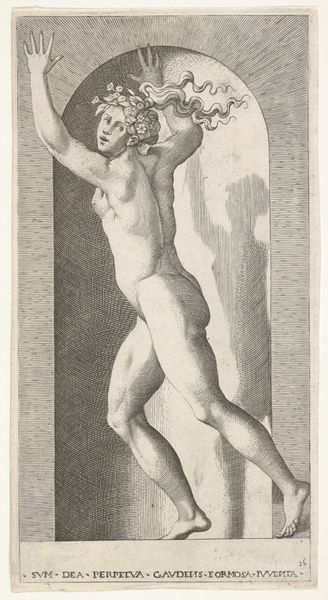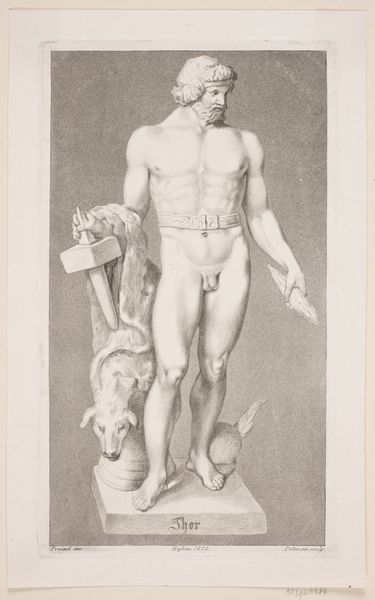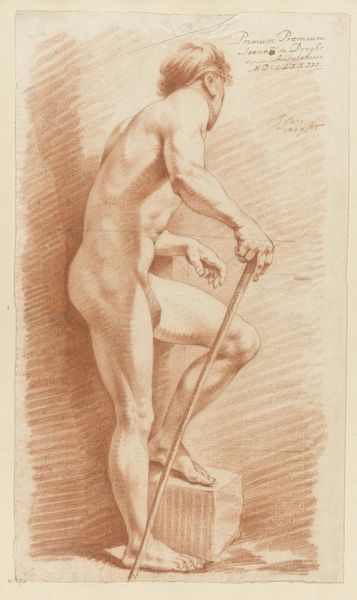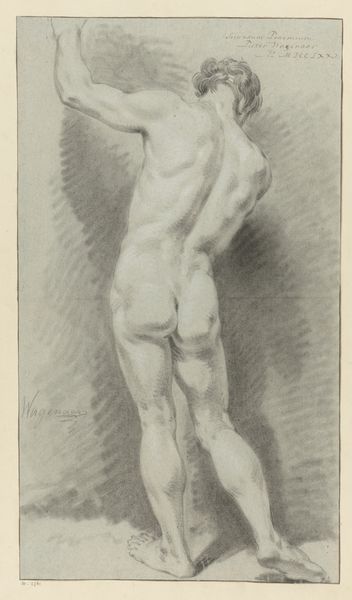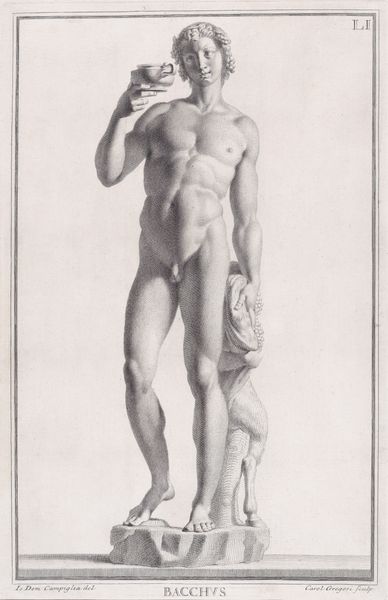
print, etching, engraving
# print
#
etching
#
old engraving style
#
classical-realism
#
mannerism
#
figuration
#
history-painting
#
nude
#
engraving
Dimensions: height 203 mm, width 115 mm
Copyright: Rijks Museum: Open Domain
Lucas Kilian created this print, Hercules verslaat Caecus, around the early 17th century. It’s a reproduction of a sculpture by Michelangelo, and the image presents us with an opportunity to consider the politics of imagery at that time. Prints after sculptures played a key role in shaping artistic taste and spreading knowledge of classical and Renaissance art. Northern European artists like Kilian disseminated Italian ideals. This particular image highlights Hercules, a symbol of strength and virtue, triumphing over Caecus. Kilian’s print, made in Augsburg, translates the Italian Renaissance into a visual language accessible to a wider audience. To understand this print fully, we need to delve into the social conditions of 17th-century Europe. Factors such as religious beliefs, economic structures, and political movements all influenced artistic production. Catalogues raisonnés and archival documents can help us to understand better the institutional and cultural contexts that shaped its creation and reception.
Comments
No comments
Be the first to comment and join the conversation on the ultimate creative platform.
